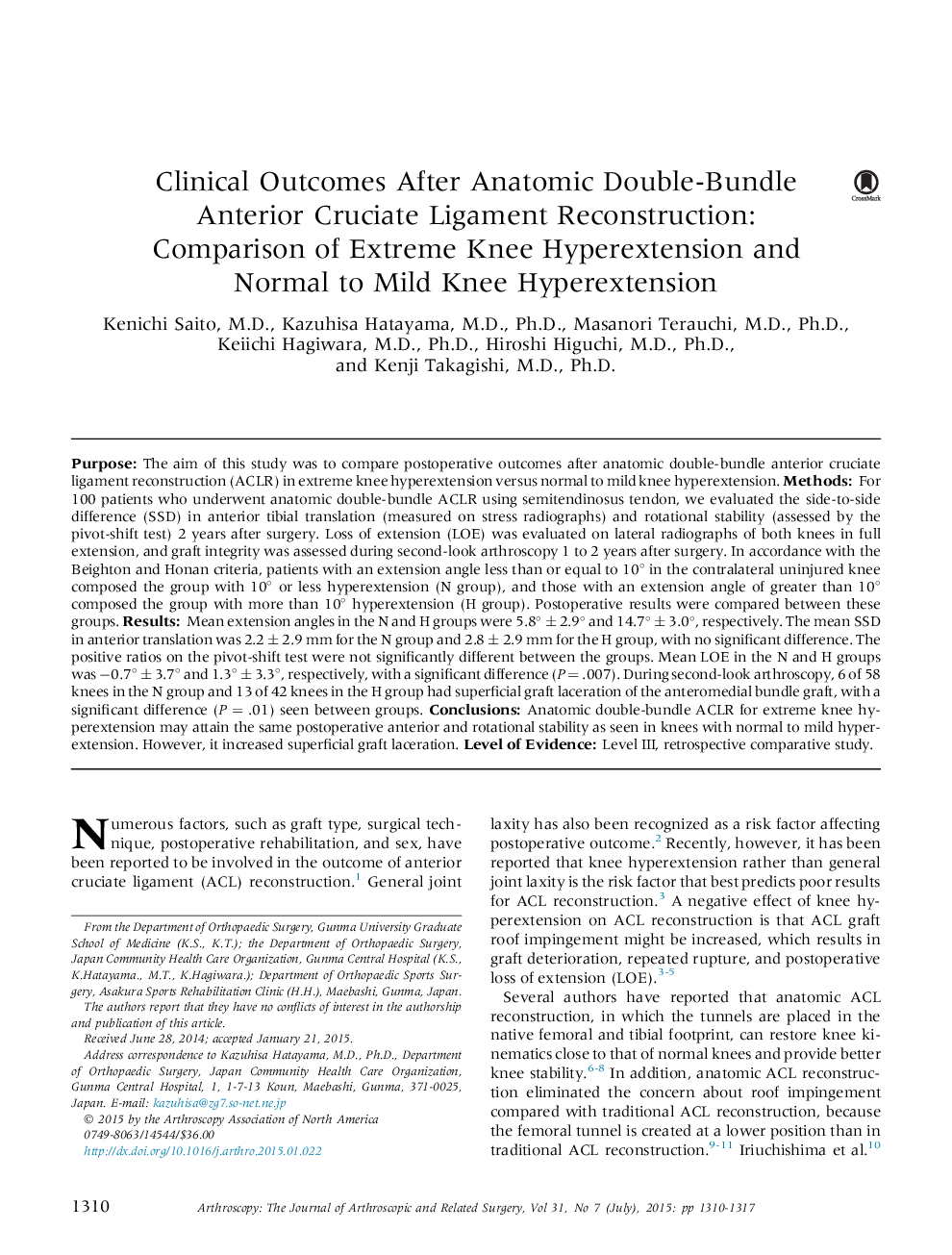| کد مقاله | کد نشریه | سال انتشار | مقاله انگلیسی | نسخه تمام متن |
|---|---|---|---|---|
| 4042356 | 1603481 | 2015 | 8 صفحه PDF | دانلود رایگان |
PurposeThe aim of this study was to compare postoperative outcomes after anatomic double-bundle anterior cruciate ligament reconstruction (ACLR) in extreme knee hyperextension versus normal to mild knee hyperextension.MethodsFor 100 patients who underwent anatomic double-bundle ACLR using semitendinosus tendon, we evaluated the side-to-side difference (SSD) in anterior tibial translation (measured on stress radiographs) and rotational stability (assessed by the pivot-shift test) 2 years after surgery. Loss of extension (LOE) was evaluated on lateral radiographs of both knees in full extension, and graft integrity was assessed during second-look arthroscopy 1 to 2 years after surgery. In accordance with the Beighton and Honan criteria, patients with an extension angle less than or equal to 10° in the contralateral uninjured knee composed the group with 10° or less hyperextension (N group), and those with an extension angle of greater than 10° composed the group with more than 10° hyperextension (H group). Postoperative results were compared between these groups.ResultsMean extension angles in the N and H groups were 5.8° ± 2.9° and 14.7° ± 3.0°, respectively. The mean SSD in anterior translation was 2.2 ± 2.9 mm for the N group and 2.8 ± 2.9 mm for the H group, with no significant difference. The positive ratios on the pivot-shift test were not significantly different between the groups. Mean LOE in the N and H groups was −0.7° ± 3.7° and 1.3° ± 3.3°, respectively, with a significant difference (P = .007). During second-look arthroscopy, 6 of 58 knees in the N group and 13 of 42 knees in the H group had superficial graft laceration of the anteromedial bundle graft, with a significant difference (P = .01) seen between groups.ConclusionsAnatomic double-bundle ACLR for extreme knee hyperextension may attain the same postoperative anterior and rotational stability as seen in knees with normal to mild hyperextension. However, it increased superficial graft laceration.Level of EvidenceLevel III, retrospective comparative study.
Journal: Arthroscopy: The Journal of Arthroscopic & Related Surgery - Volume 31, Issue 7, July 2015, Pages 1310–1317
